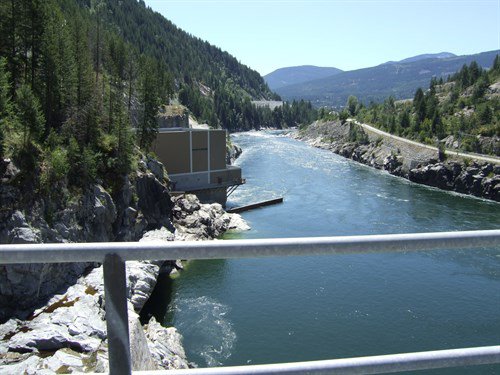Issues For Next Fish And Wildlife Program Include Dams, Hatcheries, Invasive Species
- December 18, 2013
- John Harrison

On the Kootenay River, the second powerhouse at Brilliant Dam, left, was built to accommodate a fish ladder. The dam is near the confluence with the Columbia at Castlegar, British Columbia.
Increased spill at dams, hatchery fish versus wild fish, salmon back to the Columbia River in British Columbia -- as 2013 draws to a close, the Fish and Wildlife Committee of the Northwest Power and Conservation Council and the Council’s Fish and Wildlife Division staff are digging into these and other issues that arose from more than 480 recommendations to amend the Columbia River Basin Fish and Wildlife Program.
The Council solicited recommendations earlier this year for the program revision, which takes place every five years. The current program dates to 2009.
The committee includes one member from each of the four states represented on the Council. With direction from the committee, the staff is beginning to draft a new program. With the approval of the full Council, the draft program will be released for public comment next February.
Here are some of the major issues the committee is addressing; more information is available in the staff summaries prepared by the Council’s staff:
- Mainstem dam operations and issues, including a recommendation to increase spill in the spring when juvenile salmon and steelhead are migrating to the ocean.
- The future role of fish hatcheries, including the use of hatchery fish to rebuild salmon and steelhead runs that spawn in the wild (this is called supplementation)
- Fish and wildlife mitigation in areas where fish passage is blocked by dams, particularly salmon and steelhead passage above Chief Joseph and Grand Coulee dams.
- Wildlife mitigation, particularly including the protected areas rule that prohibits new hydropower dams in areas where they would affect previously unaffected fish and wildlife populations.
- Predation on fish in the Columbia River by birds, other fish, and marine mammals.
- Controlling the spread of non-native and invasive species like northern pike and freshwater mussels.



